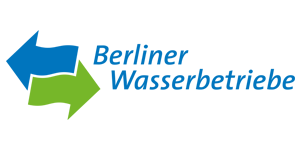Berliner Wasserbetriebe AöR (BWB)
Berliner Wasserbetriebe provides 3.5 million people in Berlin with drinking water and cleans their waste water with the latest technology. Special attention is paid to the sustainable management of the water cycle. Waterworks, wastewater treatment plants and pump works require about as much energy annually as 280,000 inhabitants in private households. Today already, the water companies themselves generate 70 per cent of the energy demand of the wastewater treatment plants and 23 per cent of their total energy demand from biogas, PV installations and wind turbines. This makes them one of the largest energy producers of Berlin.
Short description of the project contribution
Flexiblisation of loads – potential in wastewater and drinking water treatment
The energy system faces challenges: a growing share of volatile, renewable energy (32 per cent in 2016) has to be integrated into the grid. By 2050, the share of renewable energy should amount to at least 80 per cent.
Berliner Wasserbetriebe accepts the challenges of the future energy supply and develops smart solutions for the flexible management of its consumers and producers to stabilise the grid and to contribute to the success of the energy transition. In doing so, it will also consider existing and new types of storage options for biogas, electricity and hydrogen. BWB creates the preconditions for the flexibilisation of loads during the operation of installations for wastewater and drinking water treatment. The potentials for the flexible use of electricity are identified at each site.
The management of producers, consumers and storage units at wastewater treatment plants was developed with a simulation tool and then assessed and integrated in the process control system. Potentials for cost savings and flexibility were proven by operating pilot installations. A new operator concept for the emergency generators of drinking water supply installations to support grids and systems was developed and implemented. Furthermore, the operational e-fleet and the corresponding charging infrastructure are being expanded. Together with its partners, the possibilities for controlled charging of the e-fleet were reviewed and tested. Regulatory and economic obstacles for the leveraging of load shifting potentials were formulated and communicated. Together with the WindNODE project partners, additional collaboration projects were launched. A showroom informs the interested public of the activities and measures of the BWB within the WindNODE project.
